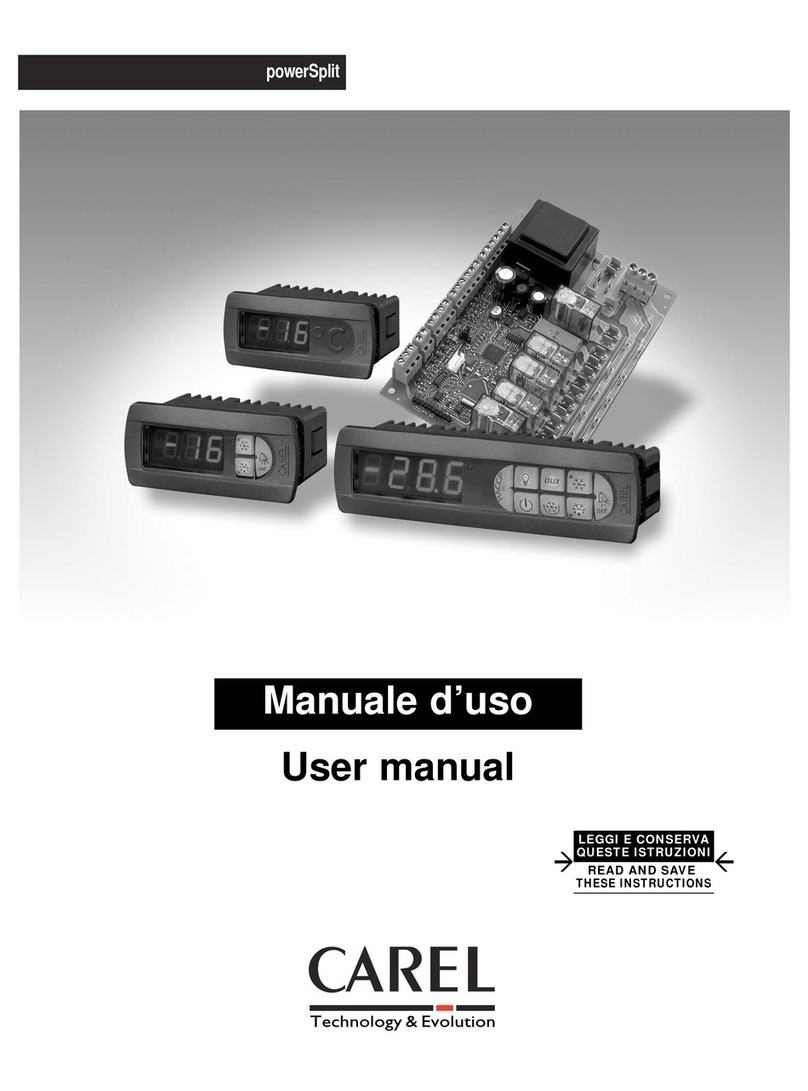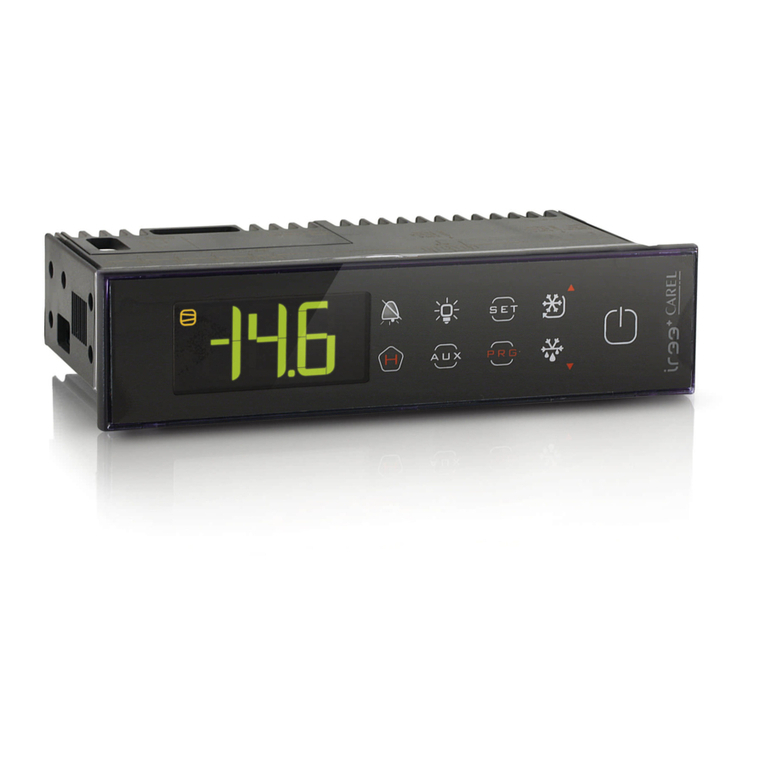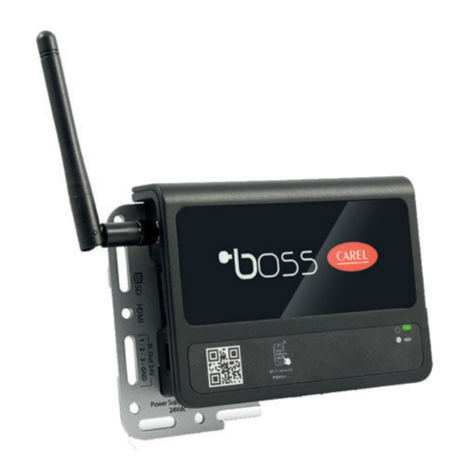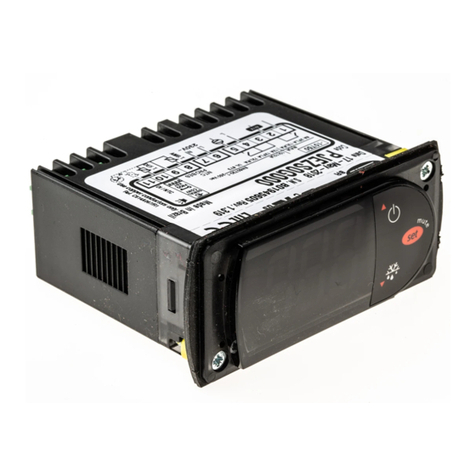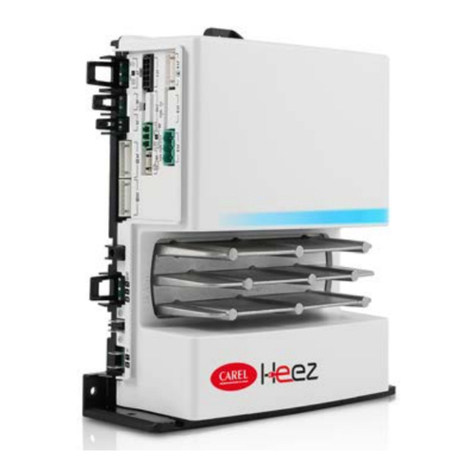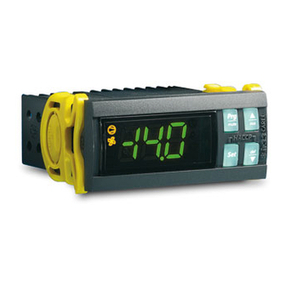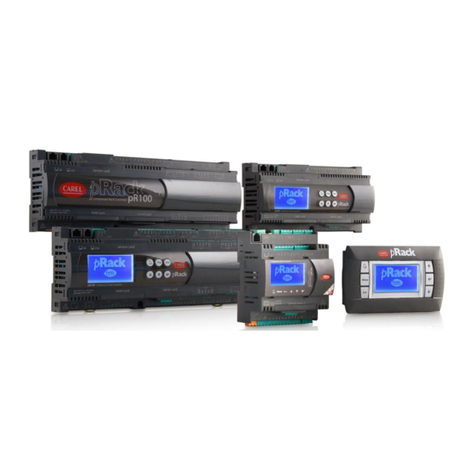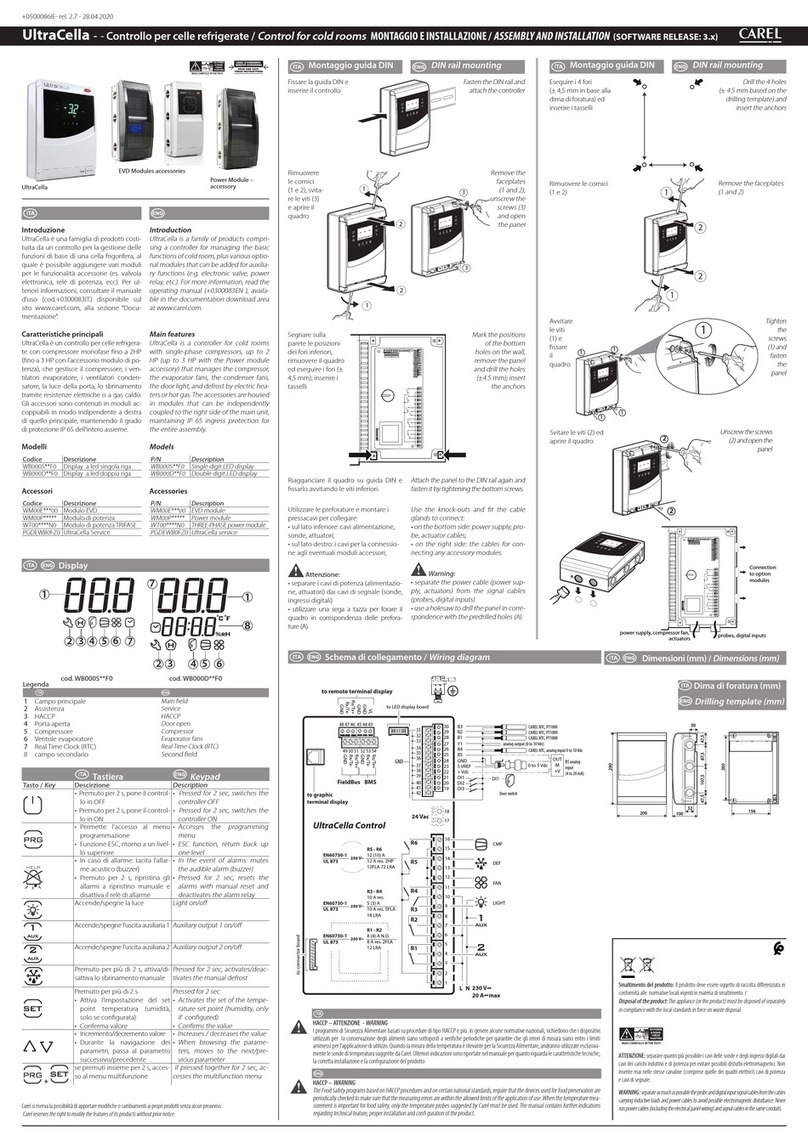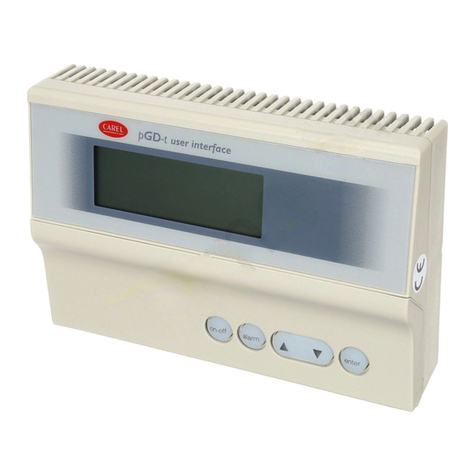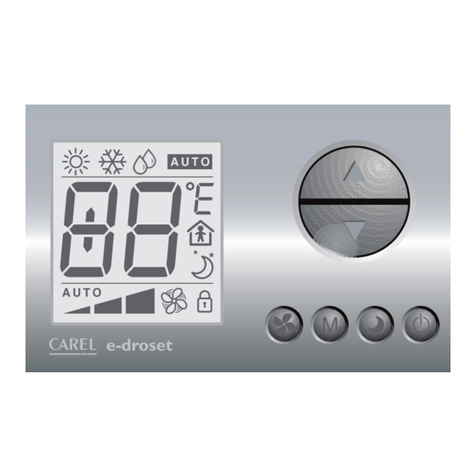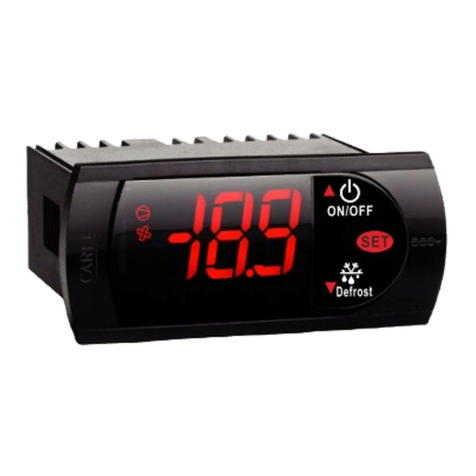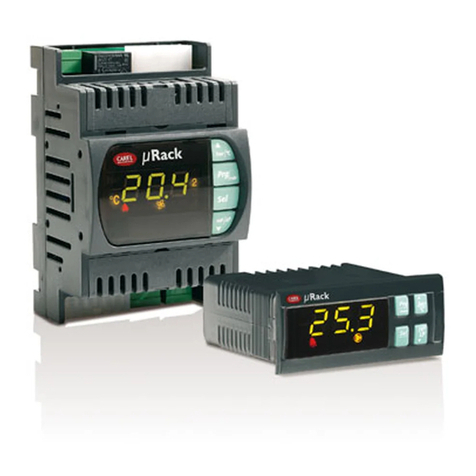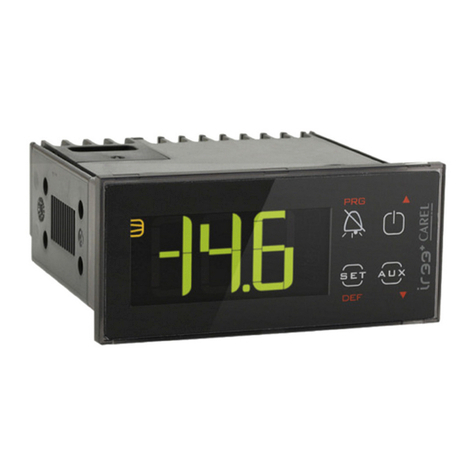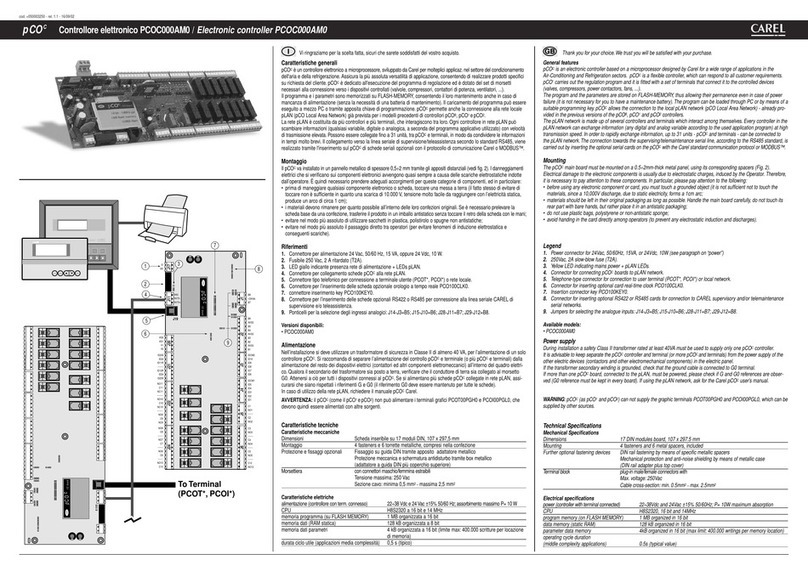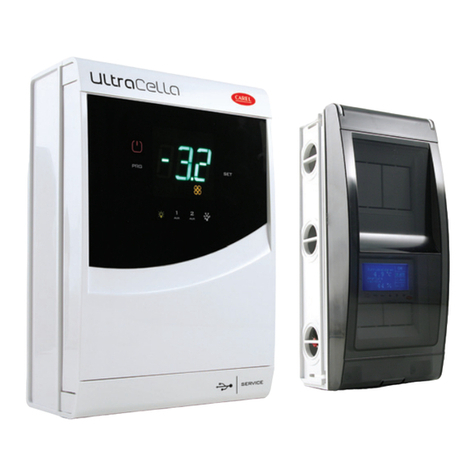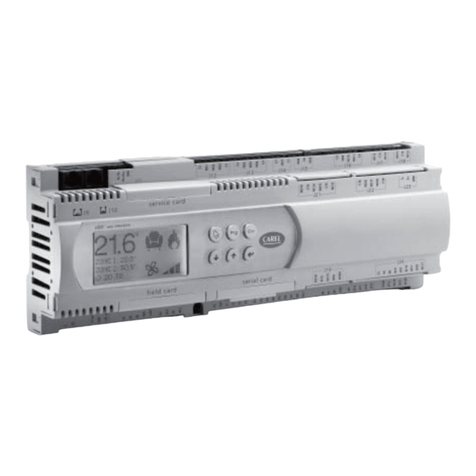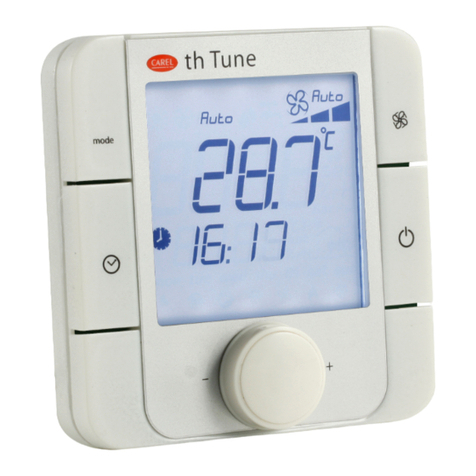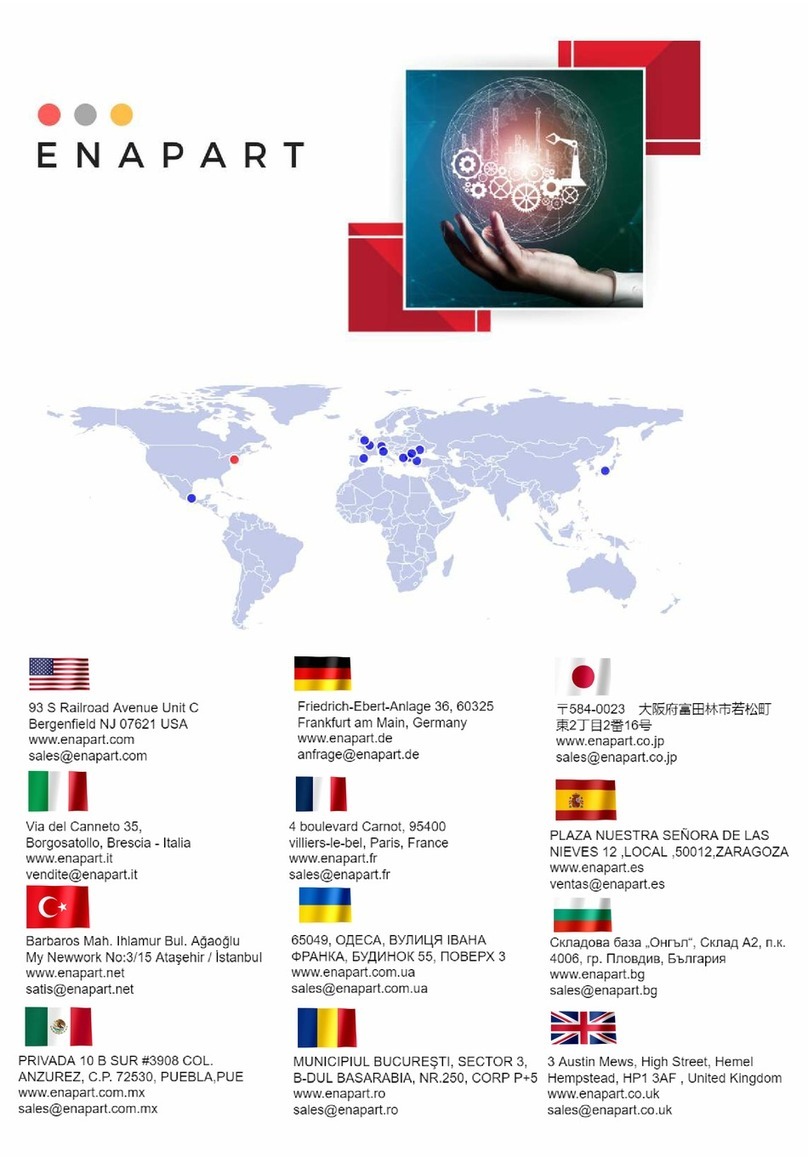
Thank you for your choice. We trust you will be satisfied with your purchase.
General characteristics
The MCHRTF series electronic devices are single-phase voltage controllers that use the principle
of phase control to adjust the effective voltage output to the load, based on the αphase of the
PWM control signal (see Fig. 4, which refers to the case of a resistive load).
One typical application is the speed control of single-phase condenser fan motors, based on
the pressure or the temperature measured on the heat exchanger.
The MCHRTF controllers have a fuse located on the outside of the board, thus allowing easy
inspection and replacement, where necessary (refer to Table 1 for the correct replacement of
the fuse). Always check with the manufacturers that the motors used are suitable for operation
with phase control devices.
Assembling the controller in the panel
The controller is mounted using plastic spacers (supplied), to be inserted in the four holes on
the board. To optimise the dissipation of the heat produced, the device should be installed
in environments where the temperature does not exceed 50°C and there is sufficient air
circulation, in such a way that the fins on the heat sink are arranged vertically (see Figure
3). To ensure the index of protection of the case (IP20), the side openings used to access the
components of the controller must not be accessible.
Electrical connections
The controller should be connected as illustrated in Figure 2. The speed controller must be
connected to the control device as follows:
• Install a safety disconnecting switch upstream on the supply line (230 Vac) so as to be able
to isolate the device for inspection.
• Connect the power supply (230 Vac) to terminals L and N. Connect the fan motor to the
terminals marked LOAD.
• Before powering up the controller, check the power connections and make sure the earth
connection is correct.
• For the power connections and the earth wire, use cables with the cross-section shown in the
table of technical specifications.
• The PWM control signal is taken from terminals Yx on the controller.
• For the PWM control signal, use a shielded cable with a maximum length of 5 m, and keep
the cable separate from other power cables.
• The power supply to the controller and the fan speed control board must be in phase. If, for
example, the power supply is three-phase, make sure that the primary of the power
transformer on the control board is connected to the same phase as terminals L and N on
the speed control board or boards; consequently, do not use 400 Vac / 24 Vac transformers
to supply the controller if phase and neutral are used to directly power the speed control
boards.
Commissioning
After having checked the connections, power up the board and apply the PWM signal from the
controller: when displacement from the network voltage changes, the effective voltage at the
controller output will vary from 0 to 230 V. In the case of resistive loads and a mains frequency
of 50 Hz, the input/output characteristic is shown in Figure 5: the x-coordinate represents the
displacement, while the y-coordinate indicates the effective voltage supplied at the output to
the load.
MCHRTF* - Regolatori di velocità/Speed controllers
+050002845 - rel. 1.0 del 15.07.2005
Vi ringraziamo per la scelta fatta, sicuri che sarete soddisfatti del vostro acquisto.
Caratteristiche generali
Le apparecchiature elettroniche della serie MCHRTF sono regolatori di tensione monofase che
utilizzano il principio del taglio di fase per regolare la tensione efficace in uscita al carico, in base
alla fase αdel segnale PWM di comando (vedi fig. 4, che si riferisce al caso di carico resistivo).
Una tipica applicazione è quella della regolazione di velocità dei motori dei ventilatori monofase
di condensazione, in base alla pressione o alla temperatura misurata sullo scambiatore stesso.
I regolatori MCHRTF sono provvisti di un fusibile posto sulla parte esterna della scheda, in modo
da poter essere facilmente ispezionato e, se necessario, facilmente sostituito (riferirsi alla Tab.
1 per la corretta sostituzione). Si raccomanda di verificare con i costruttori che i motori utilizzati
siano idonei all’utilizzo con la regolazione a taglio di fase.
Montaggio del regolatore nel quadro
Il regolatore è montato mediante distanziali plastici (forniti in dotazione) da inserire nei relativi
quattro fori della scheda. È consigliabile, per ottimizzare lo smaltimento di calore prodotto,
installare l’apparecchiatura in ambienti in cui la temperatura non deve superare i 50 °C e vi
sia una sufficiente circolazione d’aria, orientandolo in modo che le alette del dissipatore siano
verticali (vedi figura 3). Per garantire il grado di protezione dell’involucro IP20, è necessario che
le fessure laterali di accesso ai componenti del regolatore siano rese non accessibili.
Collegamenti elettrici
Il regolatore va collegato come illustrato in figura 2. Il regolatore di velocità deve essere abbinato
al controllo facendo attenzione a quanto segue:
• Predisporre un sezionatore di sicurezza a monte sull’alimentazione (230 Vac). in modo da
poterla interrompere per eventuali ispezioni.
• Collegare l’alimentazione (230 Vac) ai morsetti L e N. Collegare il motore del ventilatore ai
morsetti LOAD.
• Prima di alimentare il regolatore, controllare le connessioni di potenza e verificare l’efficienza
della connessione verso terra.
• Per le connessioni di potenza e il cavo di terra, utilizzare cavi aventi la sezione riportata nella
tabella delle caratteristiche tecniche.
• Il segnale di comando a modulazione di impulsi (PWM) viene prelevato dai morsetti Yx del
controllo.
• Per il segnale di comando PWM, utilizzare un cavo schermato di lunghezza massima 5 m, e
tenere separato il cavo da altri cavi di potenza.
• Le alimentazioni del controllo e della scheda parzializzazione ventilatori devono essere in fase.
Nel caso, ad esempio, che l’alimentazione del sistema sia trifase, assicurarsi che il primario
del trasformatore di alimentazione della scheda del controllo sia allacciato alla stessa fase
collegata ai morsetti L e N della o delle schede di regolazione di velocità; non utilizzare quindi
trasformatori 400 Vac / 24 Vac per l’alimentazione del controllo qualora si utilizzino fase e
neutro per alimentare direttamente le schede di regolazione velocità.
Messa in servizio
Dopo aver verificato i collegamenti, alimentare la scheda e applicare il segnale PWM
proveniente dal controllo: al variare del suo sfasamento rispetto alla tensione di rete, la
tensione efficace in uscita dal regolatore varia da 0 a 230 V. Nel caso di carico resistivo e
frequenza di rete 50 Hz, la caratteristica ingresso/uscita è riportata in figura 5: in ascissa è
indicato lo sfasamento, mentre in ordinata è indicata la tensione efficace fornita in uscita al
carico.
Collegamenti elettrici/Electrical connections
Fig. 2
A C
B
Modello
Model
A (lato componenti)
A (component side)
BC
MCHRTF20A0 43 100 31
MCHRTF40A0 43 100 45
MCHRTF60A0 75 100 45
MCHRTF80A0 75 100 63
MCHRTFC0A0 100 115 63
Nota: su richiesta disponibile la versione morsetti a vite codice MCHRTF*B0
Note: version with screw terminals code MCHRTF*B0 available upon request
LN
M
LOAD
230 Vac
Y GND PE
Al controllo
to controller
+-
Fig. 1
Dimensioni (mm)/ Dimensions (mm)

